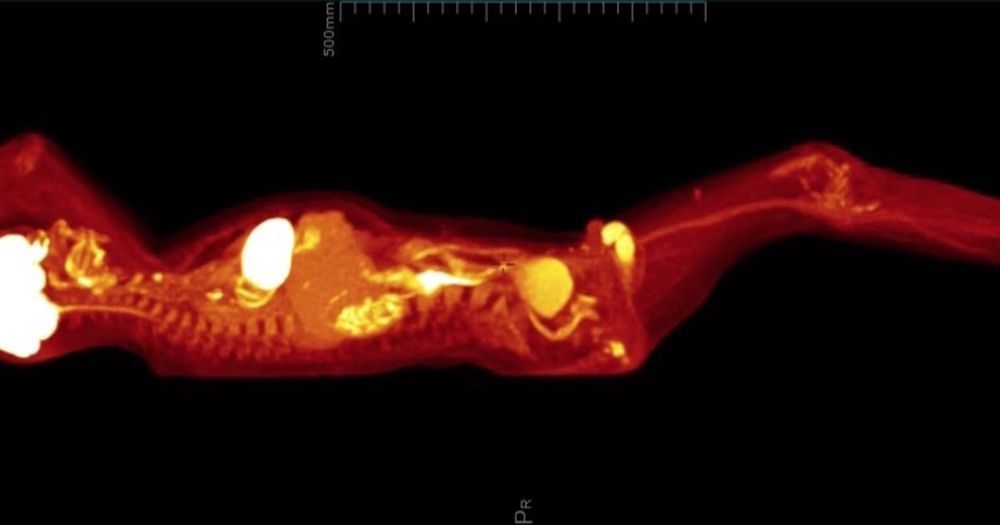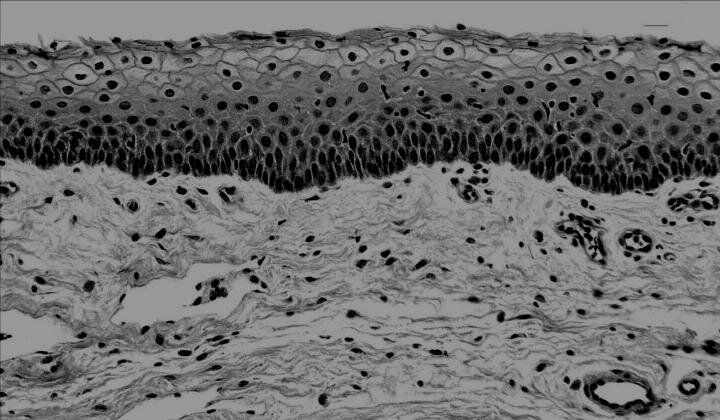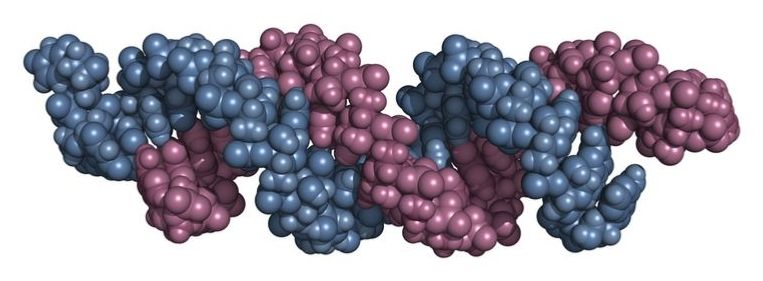After years of development, a powerful and speedy full-body scanner is ready for action.



A team of researchers at the Rochester Institute of Technology invented a “toilet seat-based cardiovascular monitoring system” that could help hospitals monitor patients for risk of congestive heart failure — a toilet, in other words, that detects whether your heart is about to give out.
“This system will be uniquely positioned to capture trend data in the home that has been previously unattainable,” reads the paper, published in the journal JMIR Mhealth Uhealth.
Integrated into the seat is a device that measures heart rate, blood pressure, and blood oxygenation levels. Algorithms will take in all that data and notify health practitioners if the patient’s condition deteriorates.

A new study identifies a single molecule as a key entry point used by two types of dangerous bacteria to break through cellular barriers and cause disease. The findings, published March 19 in the journal mBio, suggest that blocking the interaction between the molecule, known as CD40, and bacteria may represent a universal strategy for preventing life-threatening illnesses, including toxic shock syndrome.
The two bacteria, Staphylococcus aureus (staph) and Streptococcus pyogenes, cause many serious illnesses. According to the Centers for Disease Control and Prevention, staph causes 70,000 cases of highly fatal pneumonia, 40,000 cases of severe heart infections, and over 500,000 post-surgical infections each year. Streptococcus pyogenes causes 10 million cases of sore throat and 30,000 cases of severe invasive diseases annually.
“Many of the infections caused by these two bacteria start on the skin or on the mucosal surfaces that line body cavities like the nose, mouth and throat, the gut, and the vagina. The ability of these bacteria to cause disease depends on production of a family of toxins known as superantigens, which cause exceptionally harmful inflammation,” explains Patrick Schlievert, Ph.D., professor and head of microbiology and immunology at the University of Iowa Carver College of Medicine and lead author of the new study.

These findings support the idea that cognitive decline is in part due to the aging of blood cells, which are produced in the bone marrow.
Abstract
Restoration of cognitive function in old mice by transfer of blood or plasma from young mice has been attributed to reduced C–C motif chemokine ligand 11 (CCL11) and β2-microglobulin, which are thought to suppress neurogenesis in the aging brain. However, the specific role of the hematopoietic system in this rejuvenation has not been defined and the importance of neurogenesis in old mice is unclear. Here we report that transplantation of young bone marrow to rejuvenate the hematopoietic system preserved cognitive function in old recipient mice, despite irradiation-induced suppression of neurogenesis, and without reducing β2-microglobulin. Instead, young bone marrow transplantation preserved synaptic connections and reduced microglial activation in the hippocampus. Circulating CCL11 levels were lower in young bone marrow recipients, and CCL11 administration in young mice had the opposite effect, reducing synapses and increasing microglial activation.

We have talked about the potential of partial cellular reprogramming in previous articles, and today, we want to draw attention to a new paper that promises to further refine reversal of epigenetic aging in cells.
As we age, our cells experience alterations to their epigenetic markers, and this changes gene expression, which is proposed to be a primary reason we age. Recently, there has been considerable interest in resetting these epigenetic markers to reverse cellular aging, and this paper builds on that.
Three of the study’s authors, Prof. Vittorio Sebastiano, Jay Sarkar, and Marco Quarta, have founded Turn.bio, a biotech company that is working to bring partial cellular reprogramming to humans. The company is also currently enjoying the leadership of Gary Hudson from Oisin Biotechnologies, who is standing in as CEO to help the company get off the ground and funded.

Imagine that… The earth is round.
Many people view pollutants and pathogens as separate causes of illness. However, recent research indicates that the two can interact, changing how people and animals respond to infectious diseases. According to an article in Chemical & Engineering News (C&EN), the weekly newsmagazine of the American Chemical Society, environmental pollutants appear to weaken the immune system, reduce vaccine efficacy and increase pathogen virulence.
More than 20 years ago, researchers showed that exposing mice to low levels of a dioxin called 2,3,7,8-tetrachlorodibenzo–p-dioxin made them more susceptible to influenza virus. Since then, several studies have suggested that other chemicals, such as perfluorooctanoic acid, mercury and arsenic, can also alter animals’ immune responses and decrease their resistance to infectious diseases. And epidemiological studies in humans have linked chemical exposure in the womb to a child’s increased risk of infectious disease. However, scientists are only now beginning to unravel how this happens, Senior Editor Britt Erickson writes.
Compounds called per- and polyfluoroalkyl substances (PFAS) are widely used in household products, such as food packaging, nonstick products and cleaners. Researchers have linked elevated concentrations of some PFAS in mothers’ blood to reduced responses to vaccinations and more illnesses in their children. Similarly, arsenic exposure in the womb has been associated with decreased levels of antibodies against diphtheria in vaccinated Bangladeshi children. Evidence also suggests that some chemicals, such as zinc or lead, may contribute to the rise of multidrug-resistant strains of methicillin-resistant Staphylococcus aureus (known as MRSA). Such interactions are complex and will require more interdisciplinary research in environmental health and infectious disease, Erickson writes.


An intriguing new study, led by scientists from the University of Colorado Boulder, suggests an aging gut microbiome may be somewhat responsible for the degradation in cardiovascular heath that tends to appear as we grow older. The study is yet another addition to the growing body of evidence affirming the role gut bacteria plays in age-related disease.
In Nature Neuroscience, researchers present a new method to grow a cerebral organoid from human stem cells that exhibits axon outgrowth with specific tract-like patterns. Read the paper here: https://go.nature.com/2HMQxtF